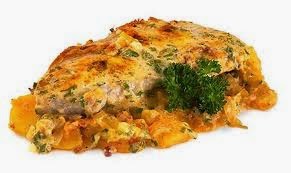 |
| Tao of Food |
"Hilly village lanes,
Whitewashed sunlit walls.
Cerulean sea.
The laughter of children."
Barley Vegetable Soup
Food is bound not to be thought of as any one thing for any one person. Meals are always occurring. Tastes change, time is of the essence, trends drag or rise depending on hot new items, diets, or TV shows. All said, commonly though, we might think of food in our daily lives in certain categories that have to do with things like how sweet it is, convenience, calorie percentages, ingredient grams, allergic tendencies or whether it fills out a plate for a stated price. It takes a bit of a calculated act of imagination to consider food itself as a tangible thread to history. History itself, often reduced to battle numbers, boundary lines, generals turned politicians and those who counter all of it, can only be fully appreciated through an imaginary reaction to the people or events. Food is similar. What did the potato taste like to the ancient farming tribes of Orkney, a set of islands off the coast of Scotland?
Years later, still in Scotland, what did the ritualistic dish of "tatties and neeps" (potatoes and rutabagas), often served with
haggis, taste like? Certain meals bring alive that associated history to your kitchen. Smells of roasted carrots must have been similar. Textures, tastes, and the desire for certain additional spices, if available, would have come to mind to all those before us. From inside the hut kitchen, looking out the stone framed window, the same sea. The sound of children laughing.
This soup makes it easy to imagine the ancient farm table from all around the world. Barley, one of the oldest known cultivated grains, boiled smooth to tiny pearls, adds a soft and comforting filler.
Rutabagas, very rarely found in modern recipes, is a root vegetable that tastes as "of the earth" as anything else grown for as a crop – it tastes like it looks.
Parsnips lend a subtly spicy crispiness that tends to steam and sink into other flavors. Diced carrots,
a couple of bunches of broccoli, a pinch of oregano and thyme, a couple of clips of onion, simmered in broth, and what you get is a flavor mixture that is a subtle yet brilliantly mild soup that would have tasted like a small treasure chest of nourishment to families for millennia.























